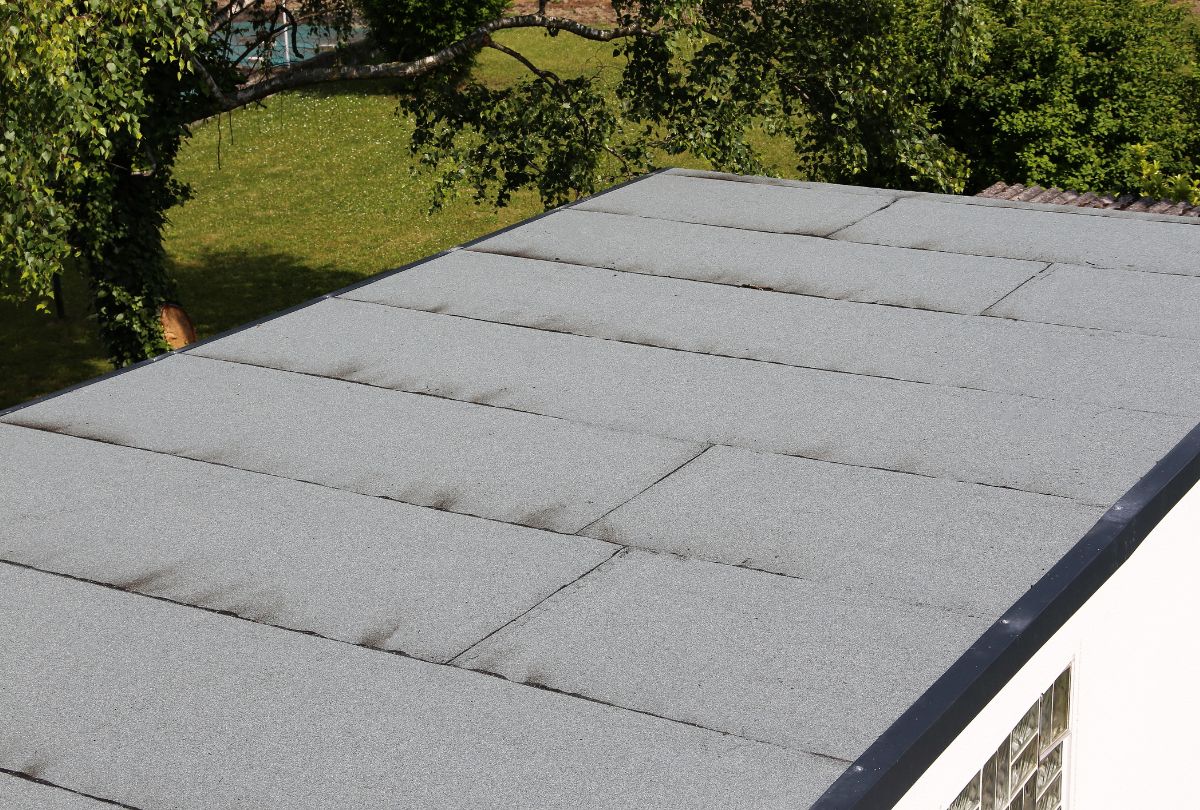Flat Rubber Roof Issues – Flat rubber roofing, which is typically made from EPDM (ethylene propylene diene terpolymer), is relatively inexpensive and very flexible. However, like any roofing material, it has some disadvantages. Flat rubber roof Issues homeowners may encounter include:
Ponding Water
Water pooling on a rubber roof after the rain is among the greatest concerns with flat roofs. Flat roofs, unlike sloped ones, don’t shed water naturally. Standing water too long can damage the roof, weaken seams, and cause leaks over time.
Solution: Make sure you have correctly working drainage systems. Roofs need to have slight slopes or other strategies – like well-positioned drains – to be able to get the water off them.
UV Damage
Rubber roofs are made to withstand sunlight, but exposure to the sun can cause drying, cracking, or shrinking of the material over time. This issue may result in a shorter life span and a higher chance of leaks.
Solution: A finishing of reflective coating or adoption of EPDM membranes that are resistant to UV rays could help protect the roof from the sun.
Seam Failures
Many flat rubber roofs are joined at their seams by adhesive or tape. With time, Om each heater, the seams may loosen owing to temperature fluctuations, improper usage,e or general wear and tear, which might cause water seepage.
Solution: Ensure the O-rings are properly seated and inspect the gaskets regularly.
Punctures and Tears
However, rubber roofing material is not invincible, and it’s susceptible to punctures from debris, sharp objects, or extreme foot traffic. Just a small hole or tear can cause water to leak in, and this can damage the structure underneath.
Solution: Keep off the roof if at all possible & remove debris as it falls. If any repairs are needed, patch small tears immediately with EPDM-compatible materials.
Shrinkage
Connecting the two rubber sheets requires them to be the same size as one another and may shrink over time from the heat and cold and from aging. Shrinkage can tug on seams, flashing, and edges and lead to structural separation or leaks.
Solution: Ensure the most excellent method by using and installing high-grade materials, and also regularly maintain the coverings to take early action on signs of shrinkage before it spreads.
Mold and Mildew Growth
Flat roofs can occasionally hold onto moisture where water collecting or leaking takes place. The roof can take on significant moisture; this can lead to the growth of mold, mildew, or algae, which can cause structural damage to the roof and pose health risks.
Solution: Regularly removing dirt and moisture on the roof and using moisture-resistant roofing material.
Poor Installation
One of the most frequent causes of rubber roof issues is poor installation. When contractors do not install the material correctly or fail to seal the seams and flashing properly, the roof becomes more vulnerable to problems like leaks and premature wear and tear.
Solution: Choose roofing contractors with proven expertise in EPDM and flat roof installations to ensure quality work.
Aging and General Wear
As with all types of roofing materials, rubber roofs wear out (in general, after about 20-30 years). They can get increasingly more brittle, and thus more prone to cracking, splitting, and other damage, as they age.
Solution: Schedule routine roof inspections and maintenance to identify and address small problems before they escalate into major issues.
Damage from Improper Repairs
Using the wrong products or wrong procedures to fix a flat rubber roof, can make the situation worse. Depending on what adhesive, tape, or coating you have, it might not adhere to EPDM, which could cause further damage.
Solution: Use EPDM roof repair materials and call out professionals if ever in doubt
Freezing and Thawing Cycles
In locations with severe winter weather, freeze/thaw cycles can add stress to the rubber material, leading to cracking or separation from seams and flashing.
Solution: Insulate the roof and surrounding structures properly to prevent temperature changes from affecting the roofing material.
Conclusion
There are a few issues that affect flat rubber roofs, and while they are a superior and budget-friendly alternative, they require frequent upkeep and proper care. If you take an active approach to inspections, repairs, and maintenance, you can significantly increase the life of your rubber roof and ensure that it will last for years to come.


